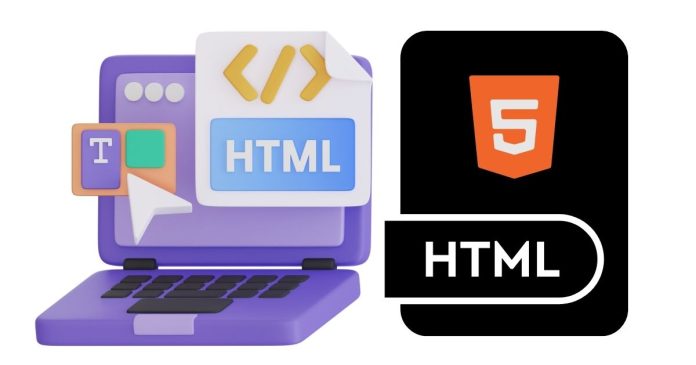HTML (Hypertext Markup Language) forms the backbone of web development. One of its versatile features is the ability to incorporate background images, which significantly enhance a website’s aesthetic appeal and user experience. Whether you’re building a simple webpage or a complex web application, background images can help convey emotions, brand identity, and more.
This blog post will guide you through the basics of adding background images in HTML, best practices, and advanced techniques to make your designs stand out.
What is a Background Image in HTML?
A background image is an image used as a backdrop for an HTML element. Unlike a foreground image, which is part of the content, a background image serves as a decorative element that enhances the visual appeal of a website.
Adding Background Images in HTML
To set a background image in HTML, you typically use CSS (Cascading Style Sheets) within a <style> tag, an external CSS file, or inline styles. The background-image property is the key to achieving this.
1. Inline Style Method
The simplest way to add a background image is by using the style attribute directly within an HTML tag.
Example:
<!DOCTYPE html>
<html>
<head>
<title>Background Image Example</title>
</head>
<body style="background-image: url('background.jpg');">
<h1>Welcome to My Website</h1>
<p>This is an example of a background image.</p>
</body>
</html>
In this example:
- The
background-imageproperty specifies the image. - The
url('background.jpg')function points to the image file.
2. Internal CSS Method
You can define the background image within a <style> tag in the HTML <head> section.
Example:
<!DOCTYPE html>
<html>
<head>
<title>Background Image Example</title>
<style>
body {
background-image: url('background.jpg');
}
</style>
</head>
<body>
<h1>Welcome to My Website</h1>
<p>This is an example of a background image.</p>
</body>
</html>3. External CSS Method
For larger projects, using an external CSS file is the preferred method.
Example (HTML file):
<!DOCTYPE html>
<html>
<head>
<title>Background Image Example</title>
<link rel="stylesheet" href="styles.css">
</head>
<body>
<h1>Welcome to My Website</h1>
<p>This is an example of a background image.</p>
</body>
</html>
Example (styles.css):
body {
background-image: url('background.jpg');
}
Customizing Background Images
The background-image property is just the starting point. CSS provides several properties to customize background images further.
1. background-repeat
Determines whether the background image repeats.
repeat: Default; repeats the image.no-repeat: Prevents the image from repeating.repeat-x: Repeats the image horizontally.repeat-y: Repeats the image vertically.
Example:
body {
background-image: url('background.jpg');
background-repeat: no-repeat;
}
2. background-size
Specifies the size of the background image.
auto: Default; preserves the image’s original dimensions.cover: Scales the image to cover the entire element.contain: Scales the image to fit within the element.- Custom sizes: e.g.,
100px 200pxor percentages.
Example:
body {
background-image: url('background.jpg');
background-size: cover;
}
3. background-position
Positions the background image within the element.
- Values:
top,center,bottom,left,right, or specific coordinates (e.g.,50% 50%).
Example:
body {
background-image: url('background.jpg');
background-position: center;
}
4. background-attachment
Controls whether the background scrolls with the page or stays fixed.
scroll: Default; the background scrolls with the page.fixed: The background remains fixed as the page scrolls.
Example:
body {
background-image: url('background.jpg');
background-attachment: fixed;
}
5. Shorthand background Property
Combine all background properties into a single declaration.
Example:
body {
background: url('background.jpg') no-repeat center/cover fixed;
}
Best Practices for Background Images
- Optimize Image Size
Large images can slow down your website. Use image compression tools to reduce file size without compromising quality. - Choose High-Quality Images
Use high-resolution images to ensure they look good on all screen sizes, especially on retina displays. - Use a Fallback Background Color
In case the image fails to load, specify a background color.Example:body { background: #f0f0f0 url('background.jpg') no-repeat center/cover; } - Ensure Accessibility
Use contrast-friendly images and test readability. Add an overlay or adjust text color if necessary. - Responsive Design
Test how the background image behaves on different screen sizes. Use media queries to adjust properties.
Advanced Techniques
1. Adding Overlays
Use a pseudo-element (::before or ::after) to add a semi-transparent overlay on the background.
Example:
body {
background: url('background.jpg') no-repeat center/cover;
position: relative;
}
body::before {
content: '';
position: absolute;
top: 0;
left: 0;
width: 100%;
height: 100%;
background-color: rgba(0, 0, 0, 0.5); /* Black overlay with 50% opacity */
z-index: -1;
}
2. Parallax Effect
Create a parallax scrolling effect by combining background-attachment: fixed with other styles.
Example:
.parallax {
background: url('background.jpg') no-repeat center/cover fixed;
height: 500px;
}
Conclusion
Background images in HTML are a powerful tool for creating visually appealing web designs. By mastering the basics and experimenting with advanced techniques, you can create dynamic and responsive designs that capture users’ attention.
Start incorporating background images into your projects today and elevate your web design skills!



